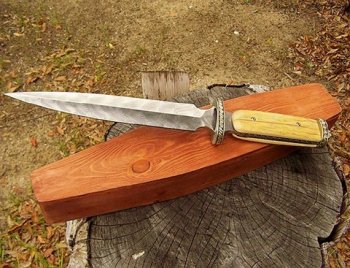If you've never dealt with anything that has been waterjet cut.... the cut will not be dead straight. Meaning that one edge of something cut lengthwise will be thicker than the other (the trailing edge of the cut). That is just the nature of cutting with a waterjet. If you divide .3125 (5/16") by 2 you get: .3125/2= .156
The question to ask whomever does the cutting is "How big is the kerf of a cut?" If the kerf is say .030" then your down to .126 on each piece (at least on one edge), and then you have to take into consideration that your going to have to clean up the piece, so by the time everything is done, your likely going to be down to about .100" or so on each piece.
A waterjet machine has the choice of several "quality of cut" settings. This refers to how fast the nozzle travels, with dictates how clean and straight the cut is.....general the higher the quality of cut, the more it costs.
Just to give you an idea, I have a waterjet outfit locally that cuts "slices" for me from Mosaic damascus loaves. On the lowest quality of cut, on 1 1/2" thick loaves, they charge $15 per cut. The slices are generally .020-.025" thicker on one edge than the other. The kerf on their nozzle is .035. So, for every four slices of steel I get, one is lost to the kerf on .125 cuts. When I want to end up with .125 thick pieces after cutting, I always have them cut it to .140" thick.
If the billet you have is dead straight and true, it can work, but don't be surprised if you get charged a pretty good setup fee.....trying to line up and hold a 5/16" bar so it cuts straight is a chore.
If I were you, and have a small metal cutting bandsaw, I would set up some kind of "rip fence" and cut it with myself.

